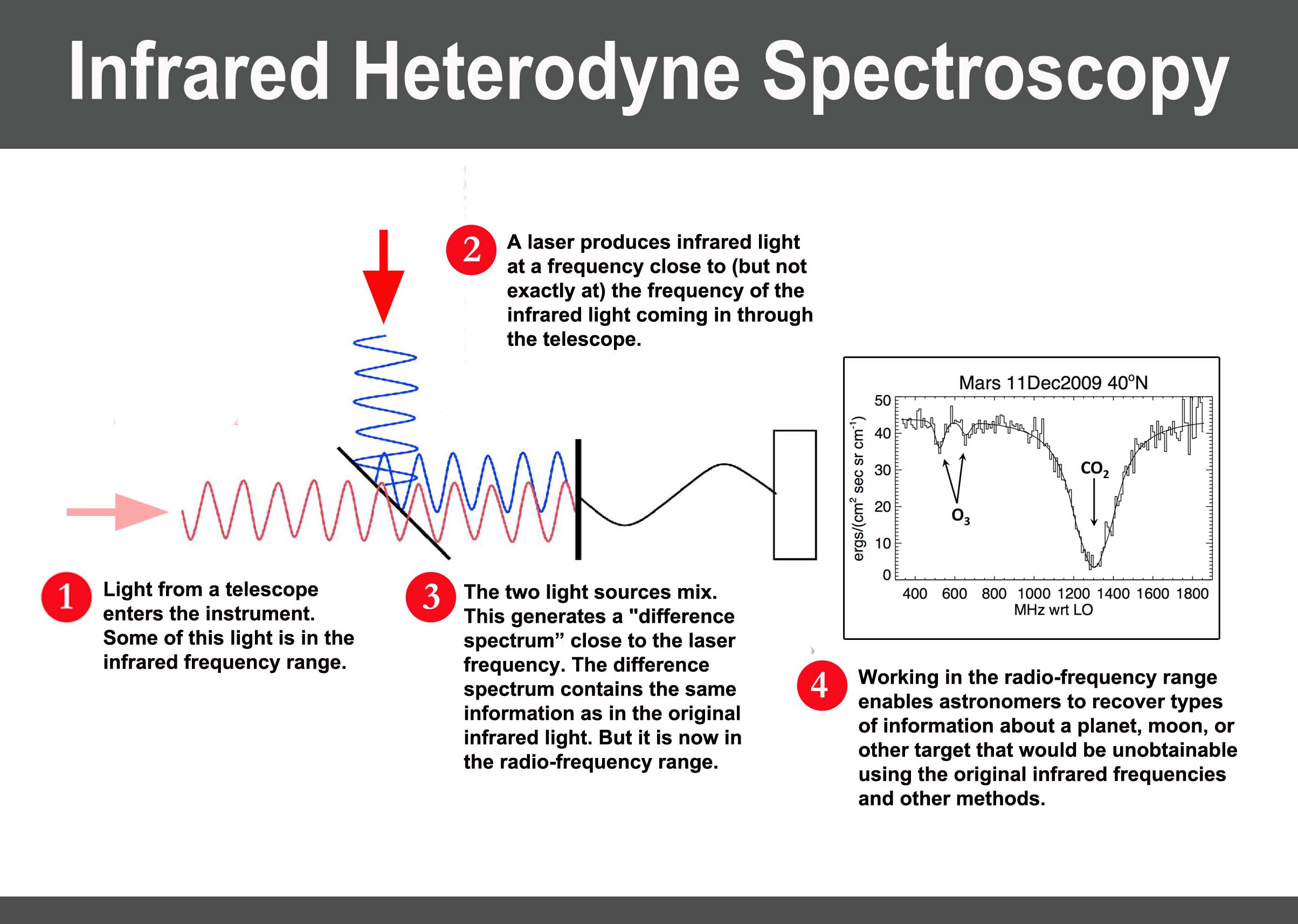
To study the atmospheres of other planets and their moons, earthbound astronomers use a set of techniques called
spectroscopy. Light is collected by a telescope and split into its component wavelengths, creating a spectrum. Patterns
in the spectrum reveal detailed information about the composition, temperature, and motions of atmospheres millions
to billions of miles away.
Infrared heterodyne spectroscopy, the technique used by the HIPWAC instrument, allows astronomers to retrieve
important information about planetary atmospheres. It operates in the infrared portion of the spectrum to detect
light produced by planets and moons with atmospheres.
Warmed by the sun, molecules of gas in a planet's atmosphere vibrate at characteristic wavelengths. HIPWAC "tunes
into" these wavelengths, like a radio tuner tunes into a particular broadcast
channel.
The source of HIPWAC's power is the ability to resolve minute details in the infrared spectrum. Whereas as
other techniques look broadly across a wide range of wavelengths — like a wide-angle lens — heterodyne
spectroscopy is more like a microscope, revealing otherwise invisible details across a smaller range of wavelengths.
What HIPWAC reveals
HIPWAC enables astronomers to look in detail at the behavior and characteristics of specific molecules of
gas in a planetary atmosphere. This includes:
- Chemical composition: HIPWAC can detect and unambiguously identify many of the most important
gasses in planetary atmospheres, including but not limited to ethane, methane, carbon
dioxide, ozone, ammonia, ethylene, and water vapor.
- Planetary winds: HIPWAC can measure the flow of winds on other planets, including Venus, Mars, and
Saturn's moon Titan.
- Atmospheric profiles: HIPWAC provides data that can be used to determine how gas abundance,
pressure, and temperature in a planetary atmosphere vary with altitude.
- Chemical processes: Precise measurements of molecular abundances provide insight into photochemical
processes in planetary atmospheres and guide the development of theoretical models of atmospheres.
How HIPWAC works
The word heterodyne
is derived from the Greek hetero ("different") and dyne ("power.") Roughly translated, heterodyne means "generated
by a difference." A heterodyne receiver combines two slightly different signals and generates a third signal
(the difference signal).
In the HIPWAC instrument, a laser produces infrared light at a frequency close to, but not exactly at, the
frequency of the infrared light from a celestial object (such as a planet) that astronomers have targeted for
study. The frequencies from the laser and the object combine on a detector. The result of the mixing process is
a spectrum of the differences between the original frequencies.
Most importantly, the spectrum of difference frequencies has been shifted into the radio frequency range, yet still contains
all the information contained within the original infrared light from the planet or moon being observed. Being able
to work in the radio frequency region makes it possible to recover a level of detailed information from the spectrum
that would otherwise be unobtainable if the astronomers had to work with the original infrared light frequencies.
